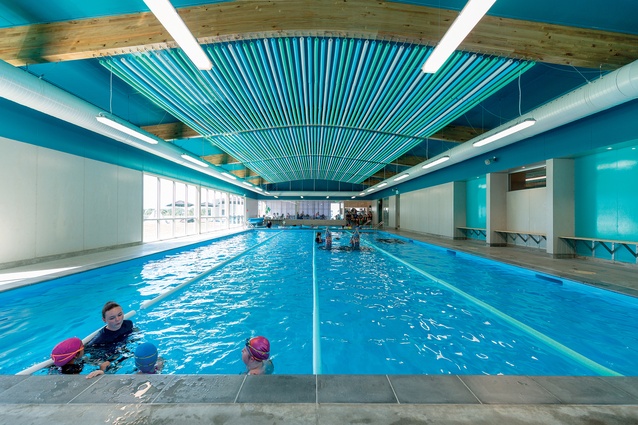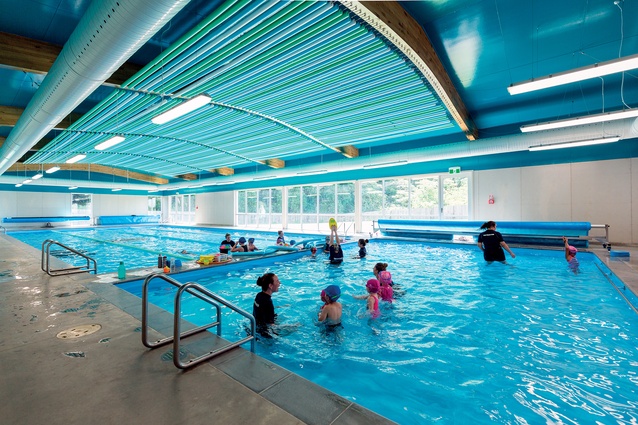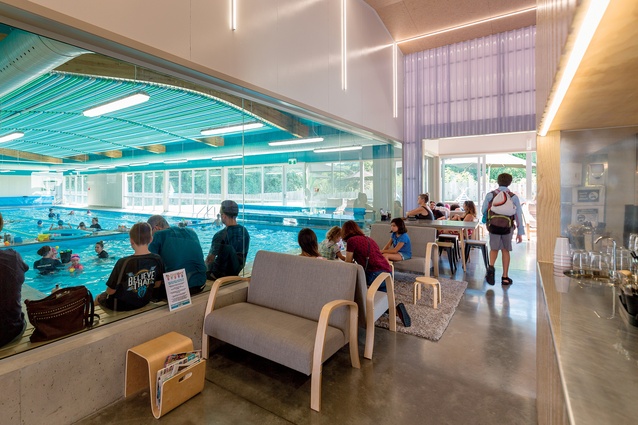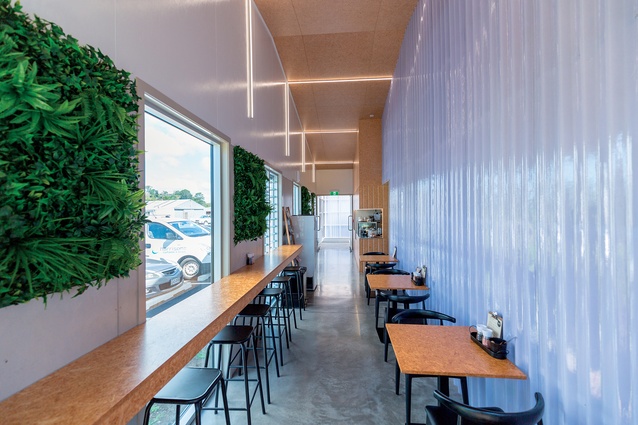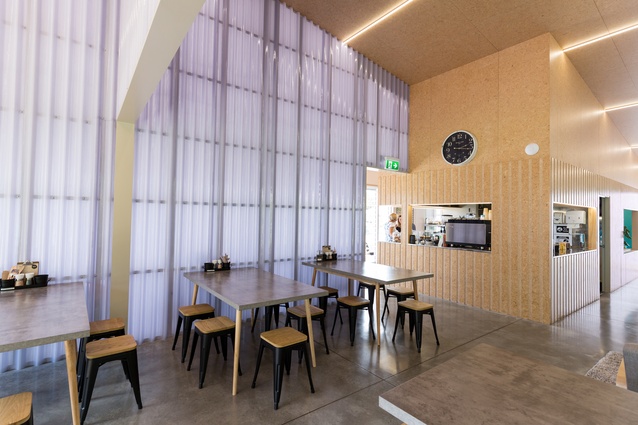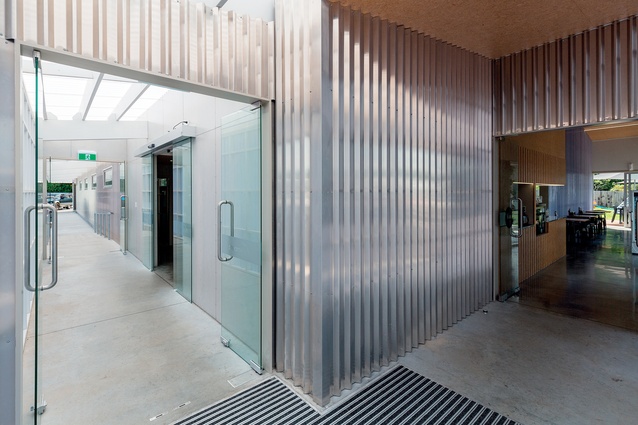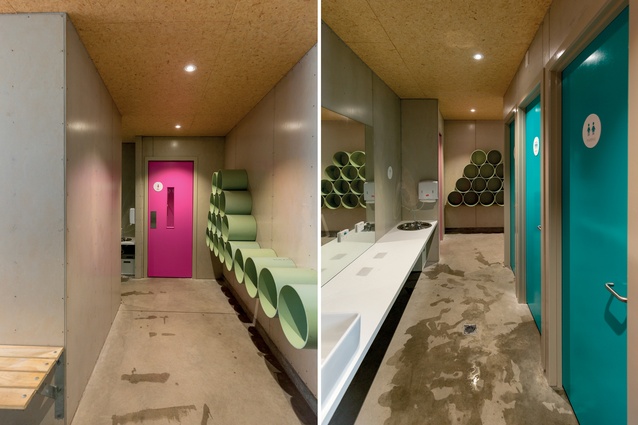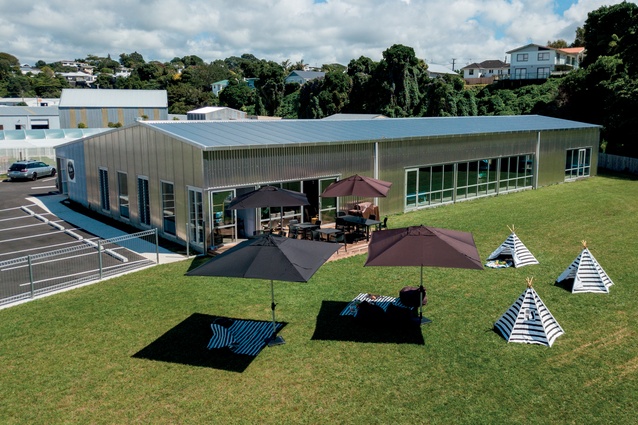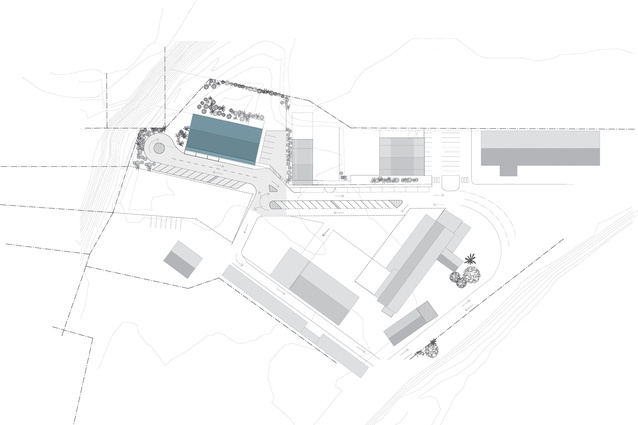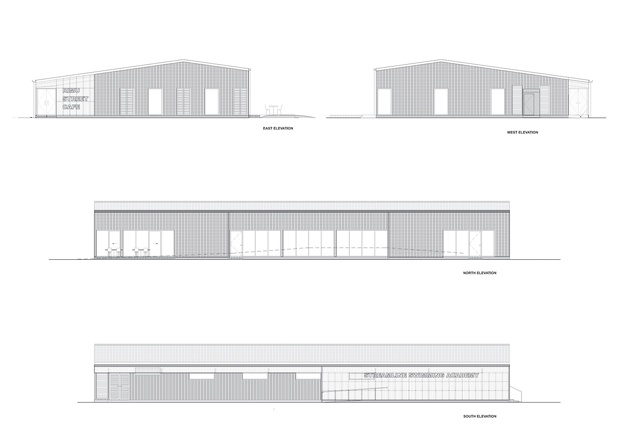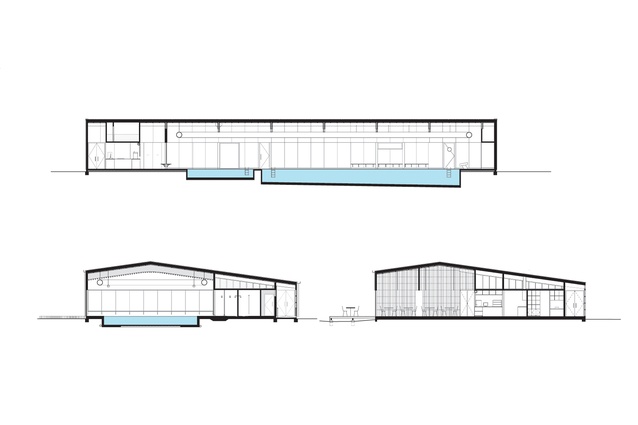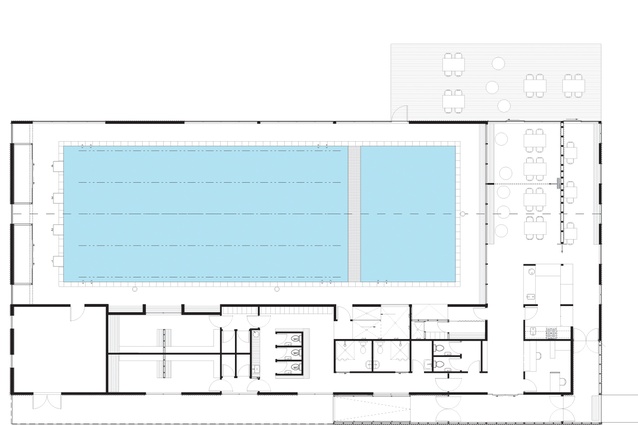Streamline Swim Academy
This new swimming complex in New Plymouth, designed by Bonnifait + Giesen Architects, belies a modest budget with its shed-like structure that is elegant and characterful.
I love visiting New Plymouth– it has a richness of architectural heritage and some terrific new buildings but, despite some new and excellent inner-city hospitality spots, it doesn’t feel particularly urban; it retains a sense of rawness and immediacy to its coastline and the landscape around. The centre of Taranaki is always going to be that eponymous maunga cloaked in cloud, and the town itself is a place perched on the edge of the coast with the Tasman gnawing away at it.
Unlike other early settlements, New Plymouth never had a decent, sheltered harbour but that’s its virtue now – it still seems to have a direct and visceral connection with a wild environment. They have even built a coastal boardwalk and a Len Lye Wind Wand, daring the sea and weather to smash them both…which regularly happens. Cool.
One of those terrific new buildings in town, from the outside anyway, is the Len Lye Centre by Patterson Associates Architects. The mirror sheen of its staggered, kaleidoscopic stainless-steel exterior doesn’t reflect just you and me for selfies but also the material culture of this region. Puke Ariki, the local museum, does it too with its aluminium lattice façade, a gesture establishing a connection to the woven arts of Māori, but pragmatically stapled together with wire like a farm fence.
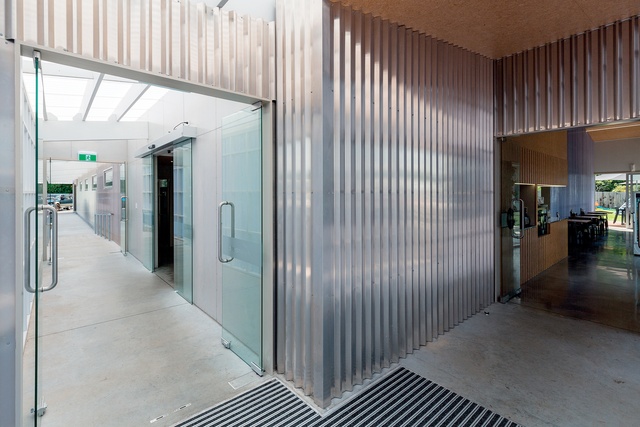
Taranaki is possibly the stainless-steel and aluminium capital of the country, where high-tech facilities extract and process milk from herds, and petrochemicals from undersea and underground. That land around town isn’t as pastoral and picturesque as you would think; it is really an industrial and agricultural complex that happens to be well grassed and a nice shade of green.
So, on your weekend away, here is a another new building worth a look that seems to adopt that metal-tech language too: the Streamline Swim Academy by Cecile Bonnifait and William Giesen, practising as Bonnifait + Giesen Atelierworkshop Architects. They are Wellington-based while Pattersons is based in Auckland.
It may be that this type of jet-in/jet-out consultancy produces a kind of technologically oriented sculptural building that’s more related to the vibe of the province than are those other buildings, more nestled into their neighbourhood contexts, that the local architects create. Although, to be fair to Atelierworkshop, they also did the very good redevelopment of the White Hart Hotel (and, by the way, that’s the place to stay).
But I’m getting ahead of myself. Leave your hotel, leave the inner-city grid, find the arterial out of town, then turn off into those curving avenues where the suburbs blossom. Drive beyond the leafy streets to where you meet the creeping gullies and paddocks, where neighbourhoods fracture into a somewhat chaotic light-industrial hinterland of asphalt and scrub, factories, workshops and piles of rusty junk. That journey will take you about five minutes from the centre of town in New Plymouth.
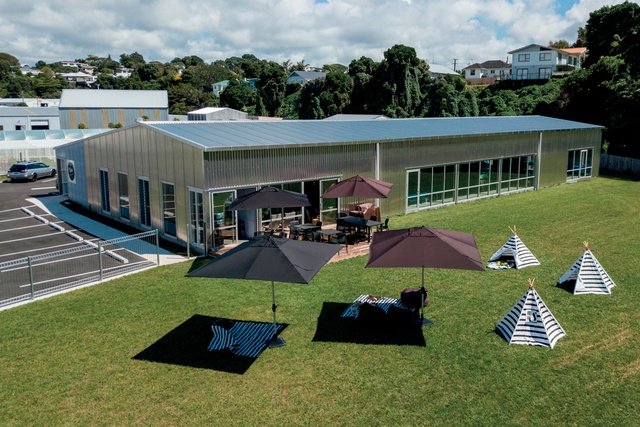
But, once there, you will find the Streamline Swim Academy (and a Department of Conservation base and a big childcare centre) among the industrial workshops and aluminium window factories. It’s this sort of unplanned, ad-hoc, floating arrangement of things that makes the new swimming pool building seem quite at home. Of course, the structure and material selection have been underpinned by a tiny budget but the language of the building also responds to its neighbouring context.
It’s a shed with style: a frosty, plastic-and-aluminium ice floe in a sea of asphalt and car park. The neighbouring childcare centre (also by Atelierworkshop) uses a similar language but its smaller scale has a more domestic car port/ranchslider/plastic-roofed pergola character in which the kids would feel at home.
The pool has more of a shed-as-civic-facility scale and character; it’s not afraid of long, blank exteriors and simplicity. Its other neighbour is a large horticultural structure, perhaps a DoC plant nursery: an acre of long, white cloud, done in wind cloth with a galvanised-steel backbone.
New Zealand swimming pools are not your relaxing spas, temples of pleasure or Zumthor-esque caves; they are places where regulars grind out early-morning or after-work laps and where, during school hours, squadrons of children receive instruction. In downtime, the retired do aqua aerobics. They are places of training rather than enjoyment, with a deafening din and a bracing snort of chlorine.
Consequently, the planning here is very efficient. Ingress and reception are right on the entrance corner. Down one long side, a roof overhang does duty as a welcoming verandah where schoolkids are marshalled off buses before being processed through toilets, changing rooms and showers. Along the front of the building, there is a different situation for mums and dads – a café and a parents’ lounge are separated from the pool by a glass wall.
The parents can be fully visually engaged with their progeny but are on the sidelines and off the backs of the trainers and the poor old kids who need expert advice rather than amateur exhortation from the sidelines – but they can still see the friendly faces.
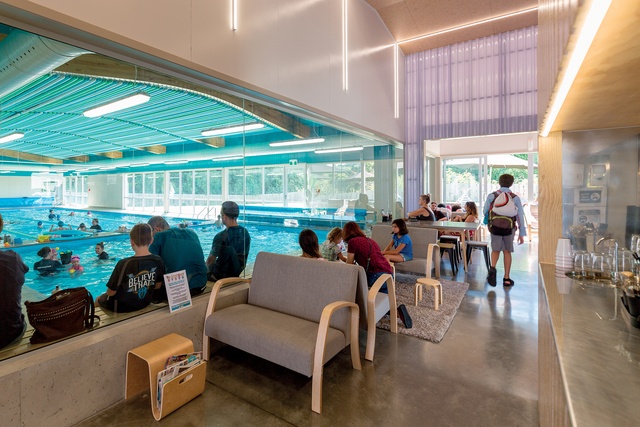
There are, however, also a couple of little family rooms, eddies in the scheme of things, where a parent and their children can change together and sort themselves out. The pools are, as you would expect: a smaller learner one for toddlers and, then, the big one, which can be configured with lanes. Both are heated by a large plant room at the back. The brilliant architectural touch to the interior is the use of polyethylene foam pool noodles across the ceiling to soak up some of the sound and add some lovely aquamarine colour.
This place has proved so popular that the outdoor deck area off the café and parents’ lounge has been expanded. Asked if they would do anything differently, the operators said only that they would increase the number of areas from which parents can watch, or improve the visibility into the pool from the deck. But, on the other hand, the deck, wrapped with translucent plastic, was also usefully separated from the main complex, enabling its separate use for functions, such as birthday parties.
So, go west, my friends; New Plymouth is fab and here is another addition to that architectural itinerary I keep meaning to write.
This article first appeared in Architecture New Zealand.


